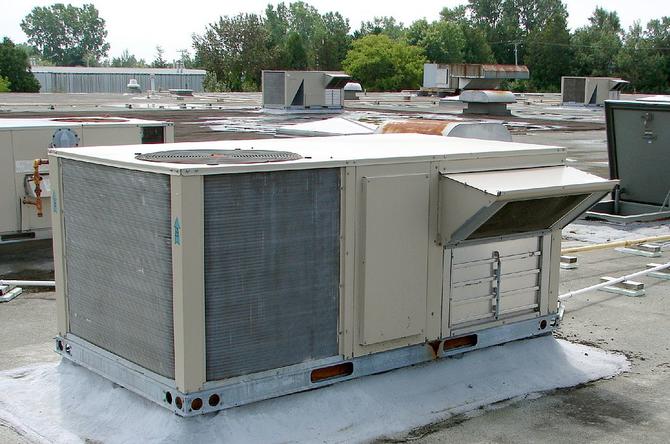If you ask the average climate change denier why 97 percent of scientists would lie about an existential threat to human civilization, his answer is likely “big government.” For just a moment, ignore the paranoia inherent in this theory. Instead, ponder how this worldview assumes an adversarial relationship between government and people, and between government and business. The thinking is that government’s only role is to force people to do things they don’t like.
That’s not reality. Addressing climate change doesn’t require a massive Washington power grab. Government can work in partnership with businesses and private citizens. A new regulation on energy efficiency, announced last week, is a perfect example.
The subject of the rule is rooftop heating and cooling devices. You may have never even noticed these unassuming metal boxes that sit atop commercial buildings, but they’re everywhere. A typical big-box retail store can have more than 20 units, humming away year-round.
Because of the sheer number of rooftop units in the United States, even modest improvements could add up to significant energy savings. Under the new rule, new air conditioners, for example, will have to be 10 percent more efficient than current models by 2018, and at least 25 percent more efficient by 2023.
One-quarter of a huge number is still a huge number. The Department of Energy predicts that the standards will save about 15 quadrillion BTUs of energy over the course of 30 years—the approximate equivalent of a year of U.S. coal consumption. The rule would prevent the emission of 885 million metric tons of greenhouse gas over 30 years. It is arguably the most significant energy efficiency standard in our country’s history.
The most encouraging part of the rule, however, is not the BTUs saved, but the cooperation involved. The Department of Energy didn’t have to jam the efficiency standard down the throat of a stubborn and obstructionist industry. In fact, the DOE didn’t even initiate the process. Manufacturers, contractors, utilities, and environmental groups asked the feds to oversee the negotiations between various sectors of industry and advocacy groups to devise the new rule. Over the course of just six months—six months!—they reached an agreement. The deal was announced in June, and last week’s announcement formalizes the accord.
“DOE’s rule for commercial unitary air conditioners and furnaces delivers a historic amount of energy savings and is a testament to how industry, efficiency advocates, and government can work together to achieve results that benefit the nation,” says Terry Johnston of AC manufacturer Lennox International.

The government is getting pretty good at mediating these efficiency deals between businesses and non-profit groups. Two years ago, the National Cable and Telecommunications Association agreed to improve the energy efficiency of cable boxes by up to 45 percent, conserving enough energy to power 700,000 homes. The Environmental Protection Agency is also making deals with real estate firms to save energy in office buildings by pursuing LEED certification and buying energy star fixtures and appliances.
You see, the federal government can be reasonable and cooperative, but when the favor is reciprocated. Uncle Sam has to get coercive via fines and laws with bad actors who hinder the evolution of our national energy strategy. Coal companies and oil companies that refuse to improve should face the wrath of big government.
Take automakers (please). In 2011, CEOs from 13 of the world’s largest car companies stood next to President Obama as he announced historic fuel economy standards. Now, those very same companies are grumbling, wanting to delay the rule. Cheap gas is making old-fashioned gas guzzlers attractive again, giving carmakers an opportunity to grab a few extra bucks. (This is exactly the behavior, by the way, that forced us to bail out the auto industry in 2009 to the tune of $9.26 billion.) Hey, Detroit, a deal is a deal.
Speaking of deals, let’s have more of them. Collaborations between government and industry, like last week’s rooftop box rule, are good for our economy, good for democracy, and good for the environment. Opportunities that will help us meet our 2025 greenhouse gas reduction targets are all around us. Sometimes you just have to look up.

This story originally appeared on onEarth as “Things Are Looking Up” and is re-published here under a Creative Commons license.




